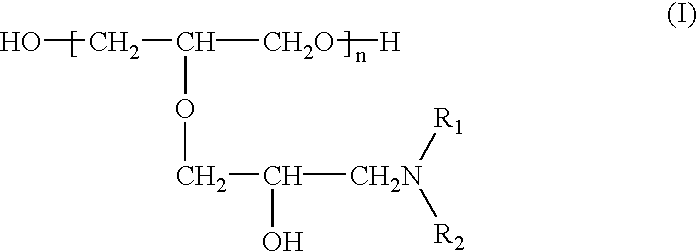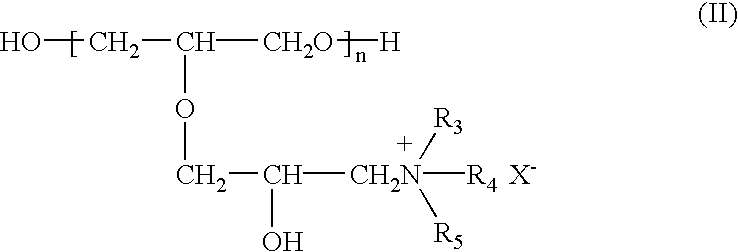Copper plating bath and plating method for substrate using the copper plating bath
a technology of copper plating and copper bath, which is applied in the direction of printed element electric connection formation, liquid/solution decomposition chemical coating, coating, etc., can solve the problems of difficult layering of copper plating over the holes, requiring a considerable period of time, and a third method is simple, but has a serious reliability problem
- Summary
- Abstract
- Description
- Claims
- Application Information
AI Technical Summary
Benefits of technology
Problems solved by technology
Method used
Image
Examples
example 1
Evaluation of via-hole Filling Performance
A patterned substrate with a configuration as shown in FIG. 30, having blind via-holes with a diameter of 80 .mu.m and a depth of 40 .mu.m and a pad with a diameter of 150 .mu.m, and processed by electroless copper plating to provide electro conductivity was prepared. A LIZATRON process (Ebara-Udylite Co., Ltd.) was used for the electroless copper plating.
After the conductivity processing, the patterned substrate was plated with copper using the following seven copper plating baths (plating baths 1-4 of the present invention and comparative plating baths 1-3). Copper plating was carried out at 25.degree. C. and a cathode current density of 2 A / dm.sup.2 for 60 minutes with stirring by aeration.
Additives commonly used with printed circuit boards were used for the comparative plating baths 1 and 3. The comparative plating bath 1 has the same formulation as the plating bath of the present invention 1, except for the type of additives, whereas th...
example 2
Evaluation of Film Thickness Uniformity in Pad Wiring Area
A patterned substrate (line width: 100 .mu.m, depth: 30 .mu.m) shown in FIG. 32, modeling a package substrate used for MPU and the like was prepared. The patterned substrate was plated with copper using the plating bath 2 of the present invention and comparative plating bath 2 used in Example 1 under the same conditions as employed in Examples 1, to evaluate the film thickness uniformity in the wiring area.
The evaluation was carried out in the same manner as in Example 1 according to the section film thickness measurement method using a microscope. The plate thickness at two points, the line end (resist side) L.sub.1 and the center L.sub.2, shown in FIG. 33 was measured for evaluation of film thickness uniformity in the pad wiring area. The results are shown in Table 2.
(Results)
As can be seen in Table 2, the wiring center (L.sub.2) and the end (L.sub.1 : resist side) were plated to almost the same thickness using the plating ...
example 3
Through-hole Throwing Power Evaluation
To investigate possibility of applying the plating baths of the present invention to through-hole plating based on the results of Examples 1 and 2, the following throwing power test in through-holes was carried out.
A substrate (FR-4) with a thickness of 1.6 mm in which through-holes with a diameter of 1 mm and 0.3 mm were bored was used as a sample. The sample was processed by electroless copper plating using the same LIZATRON process as used in Example 1 to form an electroless copper plate with a thickness of 0.5 .mu.m.
The through-holes of this substrate were plated using the plating bath 1 of the present invention and the comparative plating bath 2 at 25.degree. C., a current density of 2 A / dm.sup.2 for 70 minutes. For comparative evaluation, the same experiment was carried out using a conventional plating bath for through-holes (comparative plating bath 3).
Throwing power (%) was determined by measuring the plating thickness in the center of t...
PUM
| Property | Measurement | Unit |
|---|---|---|
| concentration | aaaaa | aaaaa |
| concentration | aaaaa | aaaaa |
| chlorine concentration | aaaaa | aaaaa |
Abstract
Description
Claims
Application Information
 Login to View More
Login to View More - R&D
- Intellectual Property
- Life Sciences
- Materials
- Tech Scout
- Unparalleled Data Quality
- Higher Quality Content
- 60% Fewer Hallucinations
Browse by: Latest US Patents, China's latest patents, Technical Efficacy Thesaurus, Application Domain, Technology Topic, Popular Technical Reports.
© 2025 PatSnap. All rights reserved.Legal|Privacy policy|Modern Slavery Act Transparency Statement|Sitemap|About US| Contact US: help@patsnap.com



